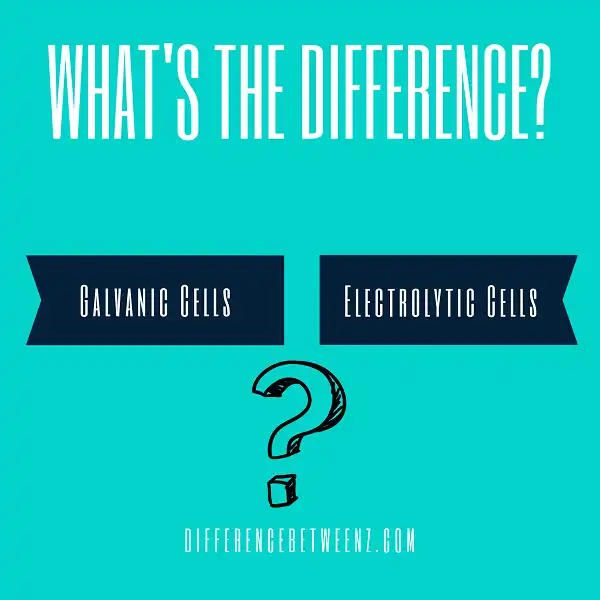Chemistry can be a complex topic, but it’s interesting to learn about the different types of chemical reactions that occur. In this blog post, we’ll discuss two specific types of cells: galvanic cells and electrolytic cells. We’ll explore the difference between these two cell types and provide some examples of each. So, if you’re interested in learning more about chemistry and cell reactions, read on!
What are Galvanic Cells?
Galvanic cells are devices that generate electricity from chemical reactions. The most common type of galvanic cell is the battery, which consists of two electrodes (usually made of metal) submerged in an electrolyte solution. When the electrodes are connected to a circuit, the chemical reaction between them produces an electric current. Galvanic cells are used in a wide variety of applications, from powering flashlights to starting car engines. Some types of galvanic cells can also be used to generate large amounts of electricity, such as those used in power plants.
What are Electrolytic Cells?
- Electrolytic cells are devices that use electricity to create a chemical reaction. The most common type of electrolytic cell is the electrolysis cell, which uses an electric current to break down a compound into its constituent elements.
- Electrolytic cells can also be used to produce chemicals, such as chlorine and caustic soda, from salt water. In addition, Electrolytic cells are used in batteries and fuel cells. Electrolytic cells usually consist of two electrodes, one positive and one negative, immersed in an electrolyte solution.
- When an electric current is passed through the cell, the positively charged ions are attracted to the negative electrode and the negatively charged ions are attracted to the positive electrode. This creates a chemical reaction that produces energy, heat, or light. Electrolytic cells have a wide range of applications in industry and research.
Difference between Galvanic Cells and Electrolytic Cells
Galvanic cells and electrolytic cells are two types of electrochemical cells. Galvanic cells produce an electric current, while electrolytic cells use an electric current to produce a chemical reaction.
- Galvanic cells are also known as voltaic cells. In a galvanic cell, two metals are placed in an electrolyte solution. When the metals are connected by a wire, they form a circuit. The metal that is more reactive will cause electrons to flow from the metal to the electrolyte solution.
- This creates an electric current. Galvanic cells can be used to power electronic devices such as watches and phones. Electrolytic cells are used to create chemical reactions. In an electrolytic cell, an electric current is passed through an electrolyte solution.
- This causes a chemical reaction to occur between the electrodes and the electrolyte. The products of the reaction are either deposited on the electrodes or released into the solution.
Electrolytic cells can be used to clean metals or to produce chemicals such as chlorine and hydrogen gas. Galvanic cells and electrolytic cells are both useful in different ways. Galvanic cells can be used to power electronic devices, while electrolytic cells can be used to create chemical reactions.
Conclusion
In conclusion, galvanic cells produce direct current (DC) electricity by the chemical reaction of two different metals in a solution. Electrolytic cells also produce DC electricity, but they use a non-metallic conductor like acid to break down water into hydrogen and oxygen gas.


